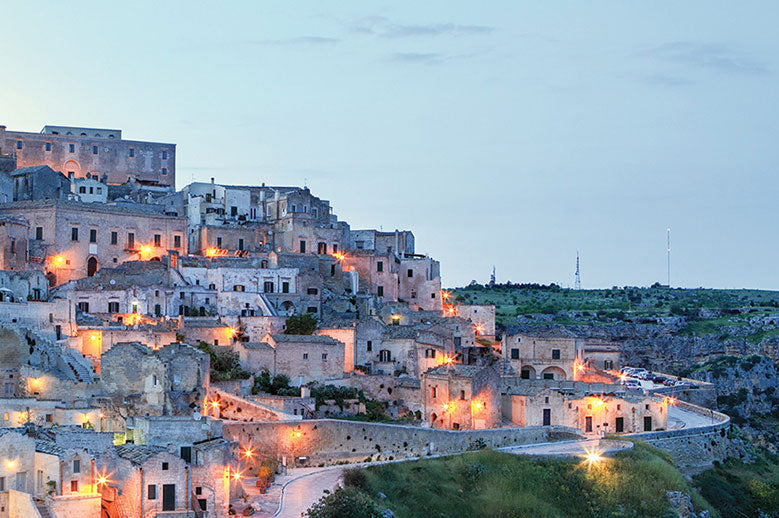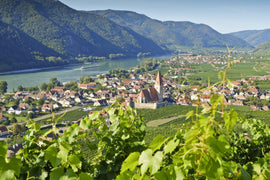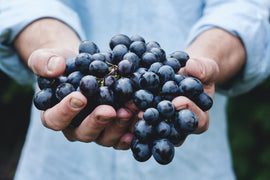Basilicata
Basilicata, also known by its ancient name Lucania, is the third least populous region of Italy but is nonetheless rich in many ways. With only two provinces, Matera and Potenza, it occupies the arch of the Italian boot and has Puglia as its eastern neighbor, Campania on its northwestern side, and Calabria on the southwestern border. The south side of the region dips into the Ionian Sea and a small part of the west into the Tyrrhenian Sea where the seaside town of Maratea, also known as The Pearl of the Tyrrhenian, is located.
In the last few years, Basilicata has exploded onto the vacationer’s map. Matera and its rupestrian archeological site of I Sassi, the ancient grottos carved into the rock used as dwellings for people and animals alike, has become a major attraction. Now most of those houses are restored and many have transformed into expensive vacation rentals. The region got another big boost when Matera was declared Capital of European Culture in 2019. Suddenly this was the place to be and only the Covid 19 pandemic has momentarily slowed down this tourism rush.
Besides the natural and artistic interests of Basilicata its visitors have started to take note of the regional cuisine which necessarily includes the wine. Here in the northern part of the region called Vulture-Melfese where the hills start to give way to higher peaks, the Romans founded Venosa in 291 B.C. It’s not surprising that they wanted to set up camp here. Thanks to its geological architect Monte Vulture, an extinct volcano of 4350 ft., the land promises great agricultural diversity: everything from apples and stone fruit groves, figs, cereals, nuts, berries, livestock and, of course, underappreciated, world-class vineyards.
The wines representative of this region are reds made almost exclusively with the Aglianico grape. Along with Nebbiolo and Sangiovese, Aglianico is part of the prestigious trio of red Italian varietals and is sometimes referred to as “the Barolo of southern Italy.” Thanks to their volcanic soil Campania and Basilicata provide the perfect conditions for this grape to develop wines of high elegance and complexity suitable for long cellaring
My challenge was to find a white wine from this region, the production of which is very limited and rarely exported. When I came across an Aglianico vinified in white, it seemed too good to be true and I couldn’t pass! I’m glad I didn’t because it’s delicious! I hope you like it as much as I do.
Today it’s hard to keep a place secret for very long. But, if you can, try to enjoy the simplicity of a place like Basilicata only with your kindred spirits. It doesn’t need a social media frenzy, so make a post in your heart and memories, with a glass of Aglianico del Vulture in your hand, of course.
Elio Longobardi, Italian Wine Specialist
PlumpJack Wine & Spirits – Noe Valley
|
Cantine Madonna delle Grazie, Leuconoe, Basilicata Bianco IGT 2020 |
|
|
Region Basilicata |
About the Winery: The Latorraca family has farmed the vineyards in the village of Venosa since the beginning of the 1900s. For decades they sold the grapes and wines exclusively to locals and cooperatives in the area. It wasn't until 2003 that Guiseppe realized the great potential of old, indigenous Aglianico grapevines that are grown in the volcanic soils of Mt. Vulture, an ancient extinct volcano. Along with his wife and sons, he built a new winery near the 16th century Madonna delle Grazie monastery on the hills that surround Venosa and decided to bottle their first vintage wine with the name "Cantine Madonna delle Grazie". Today they work 8.5 hectares of vineyards, all planted with the Aglianico grape varietal. Giuseppe takes great care to both respect and nurture the unique ecosystems of these hills, which rise to an elevation of 400 to 500 meters (between 1300-1600 ft.). Giuseppe says “Cantine Madonna delle Grazie is our work, our life and our home. I am very proud that after I'm gone, my sons will continue the traditions, values and the culture of our ancestors, producing wine with a deep and genuine respect for the environment.” About the Winemaking: Leucònoe is the name that Horace, the classical Roman poet born here, gives to the woman of the "carpe diem.” A woman whose mind is clear, shiny, ready to seize the fleeting moment. No better name can be chosen for Aglianico vinified in white.
The grapes are hand-harvested, whole bunches pressed, and the free-run juice cold settled naturally. A long cool fermentation takes place and the wine is then left on its lees until bottling.
Tasting Notes: Pale, yellow straw in the glass. Zesty and mineral at the nose, reminiscent of white fig skin, basil and elderflower. Grapefruit and more citrus notes on the palate with a lasting mineral finish. |
|
Winemaker Giuseppe Latorraca |
|
|
Price per bottle / Price per case $ 19 $ 205 |
|
|
Suggested Food Pairing Focaccia with figs and prosciutto; grilled vegetables; grilled sardines; mozzarella in carrozza (deep fried egg battered mozzarella toast) |
|
|
Musto Carmelitano, Pian del Moro, Aglianico del Vulture DOC 2015 |
|
|
Region Basilicata |
About the Winery: The winery is located in Maschito, a small town in the province of Potenza in the heart of Vulture area. Albanians chased out of their country by the Ottoman Empire invaders at the end of the 15th Century moved here and settled in the area. Even today the local population speaks this ancient dialect, Arbëresh, that is derived from Albanian language. This small family-run operation was started in 2006 by the young sister and brother, Elisabetta and Luigi, who inherited 7.5 acres planted with Aglianico vines in vineyards that range from 30 to 80 years old. Pian del Moro, the older of the two vineyards, has black, sandy soil with some calcareous elements. This highly volcanic soil has made the vineyard resistant to phylloxera and many of the vines are used for propagating the estate’s other vineyards through grafting. About the Winemaking: The family cares for three separate Aglianico vineyards, all located on the southern slopes of Monte Vulture at 2,000 feet above sea level. Soils are a mix of clay, volcanic lava and chalk. The estate has been certified as organic since the 2010 vintage. The wine is made with 100% Aglianico. The grapes of this wine come from the oldest vineyard. The resulting wine is aged in steel tanks for 12 months and then raised in 500-liter French oak barrels for about 12 months. It is marketed after a long refinement in the bottle. Tasting Notes: It pours with a deep red, garnet color. Rich nose of red ripe fruit, chocolate covered strawberry, marron glacé, and black licorice. Medium to full body with a spicy roundness. To drink with rich dishes and enjoy for the next 10-15 years if cellared. |
|
Winemaker Elisabetta and Luigi Musto Carmelitano |
|
|
Price per bottle / Price per case $ 27 $ 292 |
|
|
Suggested Food Pairing Tumacë me tulë (see recipe); roast lamb; semi aged cheese; salumi |
|
Tumacë me tulë
(Tagliatelle with bread crumbs)
The name of this recipe betrays the Arbëreshe origin of this dish. Today there are still small communities of Albanian descendants living in Puglia, Campania, Calabria and Basilicata that are keeping alive this old language and their traditions.
INGREDIENTS (serving 4)
- 6 fillets of anchovies in oil
- 1 cup walnuts, toasted and chopped
- 10 cherry tomatoes, sliced in half
- 100 g bread crumbs
- 2 cloves of garlic, finely chopped or grated
- 1 sprig of parsley
- 3 Tbsp. extra virgin olive oil
- 2 cups breadcrumbs
- Salt
- The recipe calls for handmade tagliatelle; you can buy it ready prepared as long as it’s fresh made
- In a sauté pan over medium heat add 1 Tbsp. of olive oil, 1 garlic clove cutted in four pieces and few parlsey leaves
- When the garlic starts to get a light golden color add the anchovies roughly chopped and then tomatoes
- Keep cooking the sauce at medium-low heat for 10-15 minutes
- Add ½ cup of chopped walnuts to the sauce, adjust with salt if needed and set aside
- Using a medium size sauce pan heat the remaining 2 Tbsp. of olive oil, 1 garlic clove, crushed but still with its skin on, and the breadcrumbs
- When the breadcrumbs get a nice golden color add the remaining walnuts and cook for another minute mixing with a wooden spoon
- Bring the water to boil in a pot, add salt and cook the tagliatelle until they start floating
- Drain the pasta and sauté with the sauce over medium heat until the sauce coats all the tagliatelle, about a couple of minutes
- Sprinkle with the crunchy breadcrumbs on top
Ju bëftë mirë!
(Buon appetito!)
Find similar articles
italian wine club




